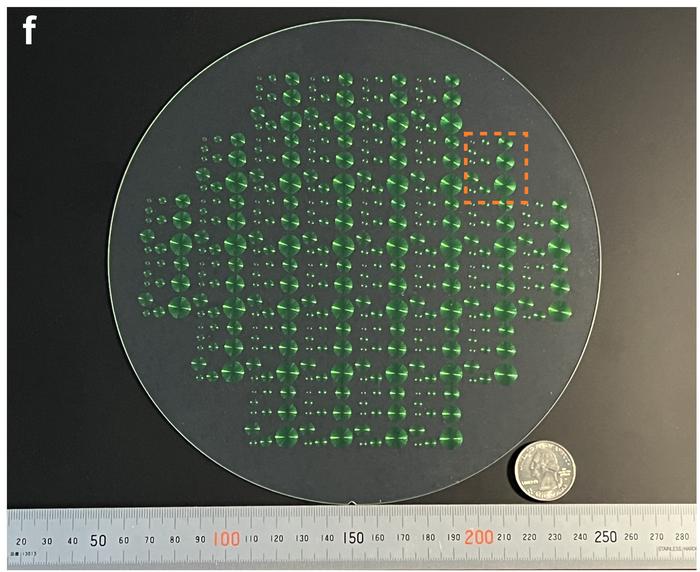
A remarkable advancement in optical technology has emerged from a collaboration between researchers at the University of Tokyo and JSR Corporation, focusing on the development of flat optical lenses. Utilizing common semiconductor manufacturing techniques, these innovative Fresnel zone plates (FZPs) have the potential to revolutionize the optical landscape, similar to how microchips transformed the electronics industry. Researchers demonstrated the manufacturability of these lenses through an i-line stepper, a piece of equipment commonly used in the semiconductor industry. This heralds a significant step toward creating affordable, high-performance optical components.
Flat lenses, while not a new concept, typically come with steep costs and complex production challenges. Existing technologies, such as metalenses, are often prohibitively expensive and difficult to produce at scale, severely limiting their availability. The introduction of FZPs represents a game-changing alternative that leverages established semiconductor fabrication technologies. By simplifying the manufacturing process, the goal is to not only enhance device quality and performance but also to significantly decrease production costs. This could lead to a new era of compact optical devices suitable for various applications, including consumer electronics, medical instruments, and astronomical instruments.
The FZP development process hinges on a unique photoresist material, known as color resist, which was initially designed for use as color filters. This remarkable material allowed researchers to fabricate lenses by employing a streamlined approach. With just a few uncomplicated steps—coating, exposing, and developing the color resist—the research team was able to produce ultra-thin lenses capable of focusing visible light down to an unprecedented resolution of 1.1 microns. This astonishing performance showcases the capability to create optical components that are approximately 100 times thinner than a human hair.
Despite the promise shown by these new lenses, there is still considerable room for improvement. Current iterations of the FZPs have a light-gathering efficiency of only 7%. This limitation results in images that are overly noisy, undermining the potential applications of the technology. Researchers are actively exploring ways to enhance this efficiency. One possible approach involves optimizing the use of the color resist, which would require a more refined control over its physical properties than what was available during this initial study.
The research team’s work is not merely focused on production; they have also developed simulations that closely align with their experimental findings. This innovative approach allows for the customization of lens designs tailored to specific applications across various fields, particularly in medicine. If successful, this capability could lead to the development of highly specialized optical instruments designed to address unique industry requirements, potentially reshaping the future of optical applications.
It’s important to note the environmental and economic advantages of this new manufacturing process. Unlike traditional lens production methods that often employ toxic etching chemicals, the FZP fabrication method is designed to be more environmentally friendly. This not only lessens the ecological footprint of manufacturing but also significantly reduces energy consumption. As industries continue to prioritize sustainability, the emergence of such innovative manufacturing practices will likely position the FZPs favorably within an increasingly eco-conscious marketplace.
The implications of this work extend far beyond academic curiosity. The potential applications for FZPs are vast, ranging from enhanced imaging devices in smartphones to more precise optical instruments in medical diagnostics. While consumers may have to wait a while before these ultrathin lenses become commonplace in everyday devices, the underlying technology paves the way for future innovations that promise to elevate visual fidelity and compactness in optical systems.
The significance of this research is underscored by its support from the JSR-UTokyo Collaboration Hub, which facilitates cutting-edge research to drive innovation. By harnessing the strengths of both academia and industry, the collaboration aims to accelerate technological advancements and translate scientific breakthroughs into viable commercial products that will benefit society at large.
As researchers continue to refine their methods and explore the full capabilities of FZPs, the likelihood of commercial applications entering the market grows. The wealth of data and insights gained during the study will inform future research directions and optimization efforts that could propel the field of optics into exciting new territories. The intersection of rapid technological evolution and the continuous push for innovative solutions constitutes a catalyst for growth in numerous sectors, including telecommunications, healthcare, and consumer electronics.
The buzz surrounding FZPs and their potential impact on various industries highlights the ongoing quest for more efficient, effective optical solutions. Manufacturers are actively seeking viable alternatives to traditional lenses, which are often limited by constraints related to size, cost, and production complexity. The advent of FZPs positions them as a forefront option in the race for optical advancement, indicating that the future may see a widespread adoption of this technology in diverse settings.
In understanding the broader impact of FZPs, it’s essential to recognize that these innovations are not merely changes in form but represent a transformation in optical functionality. As new designs and manufacturing techniques emerge, the possibility of integrating FZPs into advanced imaging systems, augmented reality devices, and miniaturized medical diagnostics becomes increasingly tangible. The collaborative potential of academia and industry will undoubtedly play a pivotal role in this evolution.
Thus, while the journey towards mass adoption of Fresnel zone plates may still be in its early phases, the groundwork laid by researchers presents a hopeful outlook for the future of optical technologies. As challenges are addressed and methodologies improved, the promise of compact, high-performance lenses that can be produced economically is likely to reshape the landscape of optics in the years to come.
Subject of Research: Optical Fresnel zone plate flat lenses
Article Title: Optical Fresnel zone plate flat lenses made entirely of colored photoresist through an i-line stepper
News Publication Date: 16-Jan-2025
Web References: University of Tokyo
References: Ryohei Yamada et al. (2025). Light: Science & Applications. DOI: 10.1038/s41377-024-01725-6
Image Credits: ©2024 Konishi et al. CC-BY-ND
Keywords
Fresnel zone plates, optical technology, semiconductor manufacturing, flat lenses, imaging devices, photonics, optical innovation, University of Tokyo, JSR Corporation.





